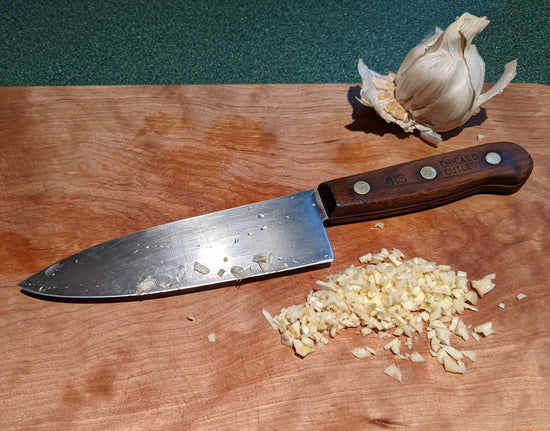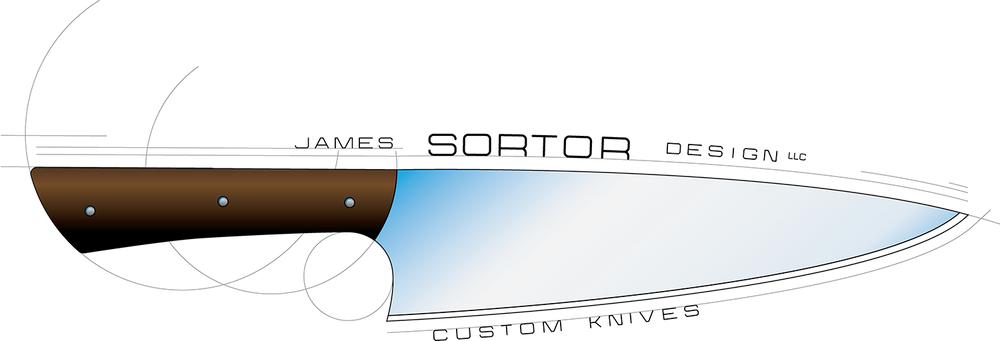Things you should know about knives
-

Hardness of a knife is measured on the Rockwell-C scale, which has a range from 0-80. Lower numbers being softer and higher number being harder. The average pocketknife would fall in the low to mid-50
range, depending on quality. Kitchen knives can range anywhere from mid-50 to mid-60 range, again largely based on quality. The great advantage of a hard knife is the ability to hold a sharp edge longer. Read that again and let it sink in for a minute. If you remember only one thing from what you are reading here today, let it be that. I cannot stress how important this is for a kitchen knife. A softer knife will require frequent sharpening while a harder knife will require only an occasional sharpening. This is referred to as Edge Retention. However, a knife can be too hard, and will tend to chip, crack, or break. This is referred to as Brittleness.
Toughness is often thought of as the opposite of brittleness. It is a measure of how resistant a knife is to chipping, cracking or breaking. As the hardness goes up, toughness goes down. A tough knife will bend rather than break. However, a knife can be too tough and fail return to straight after a load is removed. Then you must ask yourself; is a bent blade better than a broken one? We need to strike a balance between hardness and toughnessSharpenability describes how easily a knife can be sharpened. A softer, tougher blade sharpens easily but does not hold that edge very long. A hard blade is more difficult to sharpen but holds the edge longer. There are so called "super steels" that are both hard and tough at the same time. Most of them are expensive and difficult to work with. They are extreamly difficult to sharpen and require diamond or ceramic abrasives.
Steel types, there are two major types of steels used in knife manufacturing: Stainless Steel and Carbon Steel. Stainless steel is often thought of as rust proof but, this is not true. It will rust, it just takes longer. Carbon steel rusts rapidly when exposed to water. However, carbon steel can be made harder and hold an edge longer than some stainless steels. But they require more care in the kitchen or they will chip and rust. This is why virtually any kitchen knife you buy in a store will be stainless steel. There are several ways of combining carbon steel and stainless steel to get the best of both materials. This involves welding two or more pieces of steel together.
San Mai is the process of welding three pieces; one Carbon Steel core and two outer pieces of Stainless Steel to create a sandwich like structure. The carbon steel core takes and holds an edge well, while the Stainless Steel skins require little maintenance. You will see this frequently on modern Japanese style kitchen knives. Traditional Japanese knives are a generally not made this way. That is a subject for another day.
Damascus steel is a name commonly used in marketing. The process for making true Damascus Steel (Wootz steel) was lost but, has been recently rediscovered by some talented blade smiths. It is not made in any significant quantity and any “damascus” knife you buy in a store is made using a process called Pattern Welding. Two types of steel are stacked in alternating layers and welded together. The alternating layers produce the pattern you see in the “damascus steel.” In a mass-produced knife, this is purely a cosmetic feature that adds nothing in strength or toughness to the blade; it simply looks nice and adds cost.

